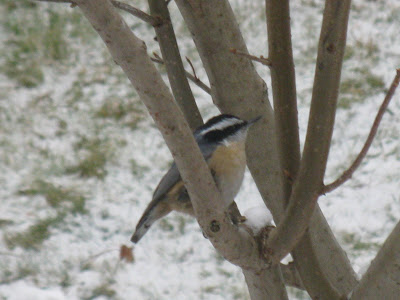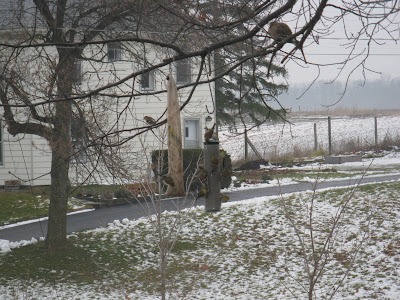
This law is for the birds
Kyle G. Brown Special to the Star
Published On Sun Nov 15 2009
"Commonly found deceased at the bottom of buildings," the macabre "Field Guide to Common Birds of Toronto" says of the ruby-throated hummingbird.FLAP.ORG
Michael Mesure has lobbied property owners, rallied activists, and teamed up with the City to find ways to stop birds from crashing into Toronto's buildings. Now, in the latest in a series of campaigns that have spanned 20 years, the executive director of Fatal Light Awareness Program has released the Field Guide to Common Birds of Toronto.
Far from being a pastoral picture of birds perched on tree branches, the 10 species depicted are dead, on their backs, beak-up.
The macabre, almost satirical spin on traditional guides is driven home with a caption for each bird: "The American Woodcock is seldom seen until flushed out or killed by high-speed impacts with buildings. Brain haemorrhaging is usually the cause of death. Of all species of birds that die this way, its high-speed flight style makes its mortality rate the highest."
On the heels of this unorthodox information campaign has emerged the City of Toronto's new regulations requiring buildings be made safer for birds – the first such rules in North America. "This will be huge," says Mesure. "I thought it was something we were only able to dream about."
From January, those seeking permission to build in Toronto will have to "mute the reflections of windows," or "treat glass with a density pattern which makes it easier for birds to see it is a solid object."
The rules are part of a wide-ranging City of Toronto Green Standard, which will require residential, commercial and industrial buildings to increase energy efficiency, reduce greenhouse gas emissions, and protect wildlife habitat.
Birds are often disoriented by glass and mistake the sky and trees they see in reflections for the real thing. Migratory birds, unaccustomed to the urban environment, are the most vulnerable.
To prepare property owners, developers and architects, council first made Toronto's guidelines voluntary in 2007.
Leona Savoie, a manager at developer The Rockport Group, said "our architects are trying to get their minds around it."
For conservationists, it can't come a moment too soon. Every year, it is estimated that between one and 10 birds collide with each building — domestic, commercial and industrial. With just under one million structures in Toronto, this means up to 10 million bird collisions occur in the GTA alone, every year.
Daniel Klem, an ornithologist and professor of biology at Muhlenberg College in Pennsylvania, believes this figure is a conservative one, as the dead and injured are often hidden from view.
This Thursday and Friday, Toronto will host a symposium for conservationists, academics, and planners from the National Audubon Society and cities including New York, Chicago, Detroit, Philadelphia, and Washington D.C, who want to know more about Toronto's law. "Toronto has become almost unintentionally a leader in this area," said Kelly Snow, a policy planner at the City of Toronto.
What kind of problems are faced by builders and architects, seeking to ward off birds? Window netting, reflective tape, stickers and decals are familiar but are not always effective.
A window film developed for glass firm Convenience Group Inc., with the help of Toronto's Fatal Light Awareness Program (FLAP), is showing promise. It cuts reflection.
"We've found that the treated windows are very successful in deterring birds," says Victoria McGrath, director of the sustainability office at the Town of Markham, where the film was installed on solarium glass.
Daniel Klem has developed a film consisting of alternating stripes that absorb and reflect Ultraviolet light. They are visible to birds, and invisible to the human eye.
This may be a coup, since many people would be put off by window coatings for homes and businesses if they interfere with the view.
For Klem, invisible film is a short-term solution until manufacturers are able to prepare a permanent effect in glass, as they do now to reduce solar heat or improve security.
That could save buyers from having to repair or replace the film every 5 or 10 years. But it's a long way off; Klem's own film has yet to be mass-produced or sold in stores.













































